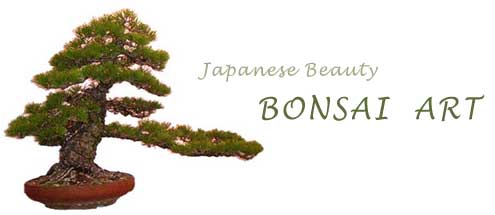
Bonsai, literally tray planting, is miniature of trees or plants showing as it grown in the nature in containers. Common trees using for a bonsai are evergreens such as pine, cypress, cedar and deciduous trees like cherry, maple and beech. Evergreens are the most popular trees by bonsai growers. The pine which symbolized eternity in Japanese is specially popular. Bonsai can be developed from seeds or cut it from young trees, or naturally occurring stunted trees transplanted into containers. Most bonsai's height range from 5 centimeters to 1 meter. Bonsai are kept small and trained by pruning branches and roots. It also periodically repotted and by pinching off new growth and wiring the branches and trunk to make them grow in desirable shape.
Bonsai expresses "heaven and earth in one container". A bonsai tree should always be off-center in its container. Japanese believe center is where heaven and earth meet, and nothing should occupy this place.
Giving proper care, Bonsai can live for hundreds of years and be passed from generation to generation. But age is not essential part of Bonsai. It is more important that the tree produce artistic effect and keep in proper proportion. The bonsai must look natural and never show the intervention of human hands. Bonsai is usually kept outdoors, but on special occasions it is often placed in the tokonoma (alcoves), traditional Japanese style room.
There are over 5 million Bonsai lovers in Japan today. Now Bonsai is well known and respected art form in all over the world.
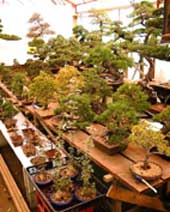 |
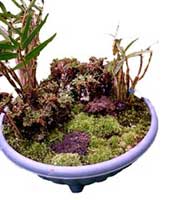 |
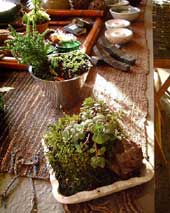 |
|
For the Japanese, Bonsai represents a fusion of strong ancient beliefs with the Eastern philosophies, the harmony between man, the soul and nature. |
|
Style The two basic styles of Bonsai is the classic (Koten) and the informal or comic (Bunjin). In classic, the trunk of the tree is wider at the base and tapers off towards the top; it is just the opposite in the comic style, a style more difficult to master.The major styles of Bonsai are the upright style, the slanting style, the cascading style (the tree is hanging from a cliff toward a gorge), the twisting trunk style and the forest style. There is also landscapes where bonsai tree is arranged with rocks, plants or even small architects. |
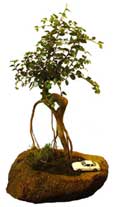 History
History
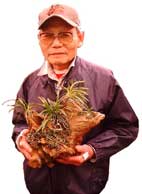
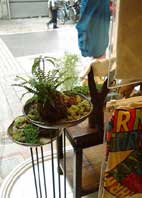 are
also unique bonsai called "Men Bonsai" which small figures
(dolls) are arranged.
are
also unique bonsai called "Men Bonsai" which small figures
(dolls) are arranged.